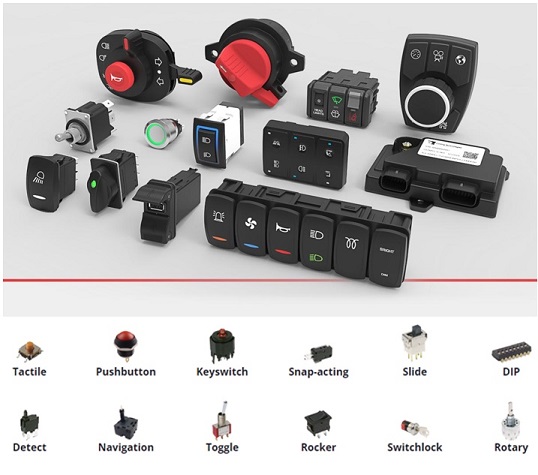Switches

switches are an electrical / electronic component that can disconnect or connect the conducting path in an electrical circuit, interrupting the electric current or diverting it from one conductor to another. The most common type of switch is an electromechanical device consisting of one or more sets of movable electrical contacts connected to external circuits. When a pair of contacts is touching current can pass between them, while when the contacts are separated no current can flow. Switches have different numbers of inputs, called poles, and different numbers of outputs, called throws. The most common switch is the single-pole, single-throw switch (SPST). The primary application of a switch is to turn ON-OFF any circuit.
Switches are made in many different configurations; they may have multiple sets of contacts controlled by the same knob or actuator, and the contacts may operate simultaneously, sequentially, or alternately. They come with a wide variety of aesthetic, size, and functionality options, including circuit configurations, AC & DC ratings, insulated from water and dust constructions, termination options, mounting options, custom colors, illumination, and imprinting options. Many specialized forms exist, such as the rocker switch, toggle switch, rotary switch, push-button switch, snap-acting switch, detect switch, tactile switch, dip switch, key switch, navigation switch, slide switch, switch-lock, thumbwheel switch, and combination style switches.
The diverse types of switches are widely used across industries such as automotive, industrial, lighting, medical, telecom, consumer products, aerospace and more.